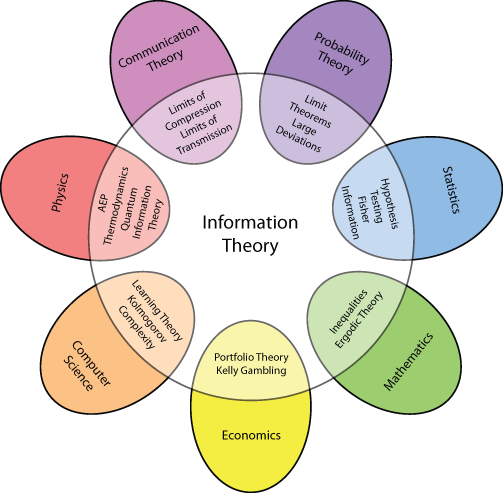Undergraduate Program: Department of Informatics and Telecommunications, University of Peloponnese
Category: Specialization in Telecommunications-Elective
ECTS credits: 5
Semester: 6th
Prerequisites: Probabilities and Statistics
Learning outcomes
By the end of this course students will:
- Evaluate the discrete source entropy
- Explain 1st and 2nd Shannon coding theorem
- Recognize and categorize source codes
- Perform data compression
- Evaluate the mutual information and the discrete channel capacity
- Explain the motivation for source and channel coding
- Encode and decode linear block codes and cyclic codes
Contents
Introduction, entropy, joint entropy, mutual information, information rate, redundancy, discrete message sources, memoryless sources, Markov sources, source coding, Huffman coding, communication channels, discrete channel capacity, continuous channel capacity, Galois field GF(2), linear block codes, Hamming codes, cyclic codes, systematic codes, BCH and CRC codes, burst error correcting codes.
Assessment
Written exams at the end of the semester. Given projects have 30%-40% weight on the total course grade.
Bibliography
- Thomas M. Cover and Joy A. Thomas, Elements of Information Theory, 2nd edition, 2006. DOI: 10.1002/047174882X
- S. Haykin και M. Moher, Communication Systems, 5th Edition, November 2008, ISBN: 978-0-470-46088-7




